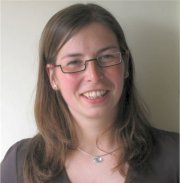
| Address: | Oceanology Centre of Marseille (COM) Laboratory of Microbiology Geochemistry and Marine Ecology (LMGEM) Campus de Luminy Case 901 13288 MARSEILLE Cedex 09 |
|---|---|
| Phone: | 0033-0491829126 |
| Email: | eichinger@univmed.fr |
| Specialization: | Marine ecology |
| Project: | DOC degradation by marine bacteria in the water column |
| Publications: |
This is the symposium that closed my project